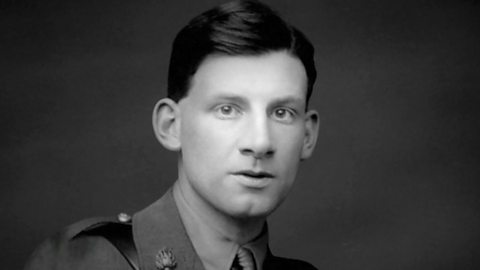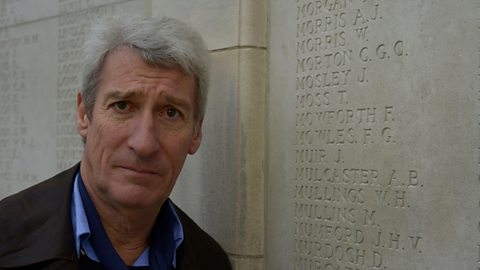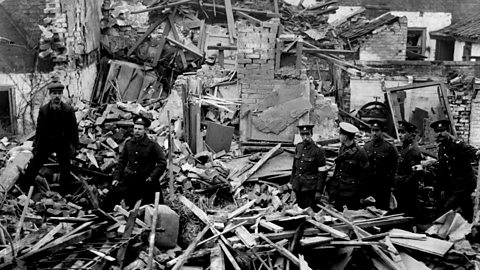Video summary
Jeremy Paxman introduces Lord Kitchener's iconic patriotic recruitment campaign and tells us about the Pals regiments, which were formed of men from one local area or of the same profession.
Lord Kitchener was BritainŌĆÖs most famous living soldier in 1914, and newly appointed Minister of War. He launched a poster campaign on a huge scale, to persuade men to volunteer to fight.
We see what the posters looked like, and hear about the different ways they encouraged men to sign up, inciting duty, fear of invasion and guilt. We see contemporary footage of public recruiting events, and hear how a patriotic mood swept the nation, causing men to enlist at unprecedented speed and scale.
Teacher viewing recommended prior to use in class.
Teacher Notes
Key Stage 3:Pupils could analyse the motivations used in different posters, and design their own to appeal to the publicŌĆÖs guilt, pride or fear._
KS4 / GCSE:Use for context and examples of the recruitment campaign. Complement by analysing a range of different poster techniques used in the poster campaign. Look for examples of such motivations as guilt, pride and fear in the posters. Consider the likely target audiences for the different methods and their likely success._
National 5 / Higher:Students could study recruitment posters from World War One and discuss the methods used to persuade men to sign up. Students could also discuss the motives of young men who joined up, and the negative propaganda which targeted men who had not signed up.
This clip will be relevant for teaching History. This topic appears in at KS3 in England, Wales and Northern Ireland and OCR, Edexcel, AQA and WJEC/Eduqas GCSE/KS4 in England and Wales and CCEA GCSE in Northern Ireland.
How Britain declared war in WW1. video
Jeremy Paxman explores the declaration of war after Germany invaded Belgium in 1914.

Crushing defeat in the first battle of WW1. video
Jeremy Paxman explores how Britain suffered defeat at the Battle of Mons.

The 91╚╚▒¼ Front. video
Jeremy Paxman explains how German u-boats crippled the country and led to rationing and the 91╚╚▒¼ Front.

The dangerous jobs of women in WW1. video
How women entered the workforce and took up dangerous roles to support the war effort.

WW1 poetry and shell shock. video
Jeremy Paxman looks at the mental health problems suffered by poet Siegfried Sassoon and soldiers in the First World War.

Treating Indian soldiers at Brighton Pavilion. video
Jeremy Paxman explains how a former royal residence became a hospital for injured soldiers in WW1.

Air raids and the bombardment of Britain in WW1. video
Jeremy Paxman explains the unprecedented bombardment of Britain in World War One.

How the Britain turned the tide in 1918. video
How the British workforce, the 91╚╚▒¼ Front and the USA joined together to fight back against the German advance in 1918.

1918: the end of the war and Remembrance Day. video
Jeremy Paxman describes the end of the First World War.
